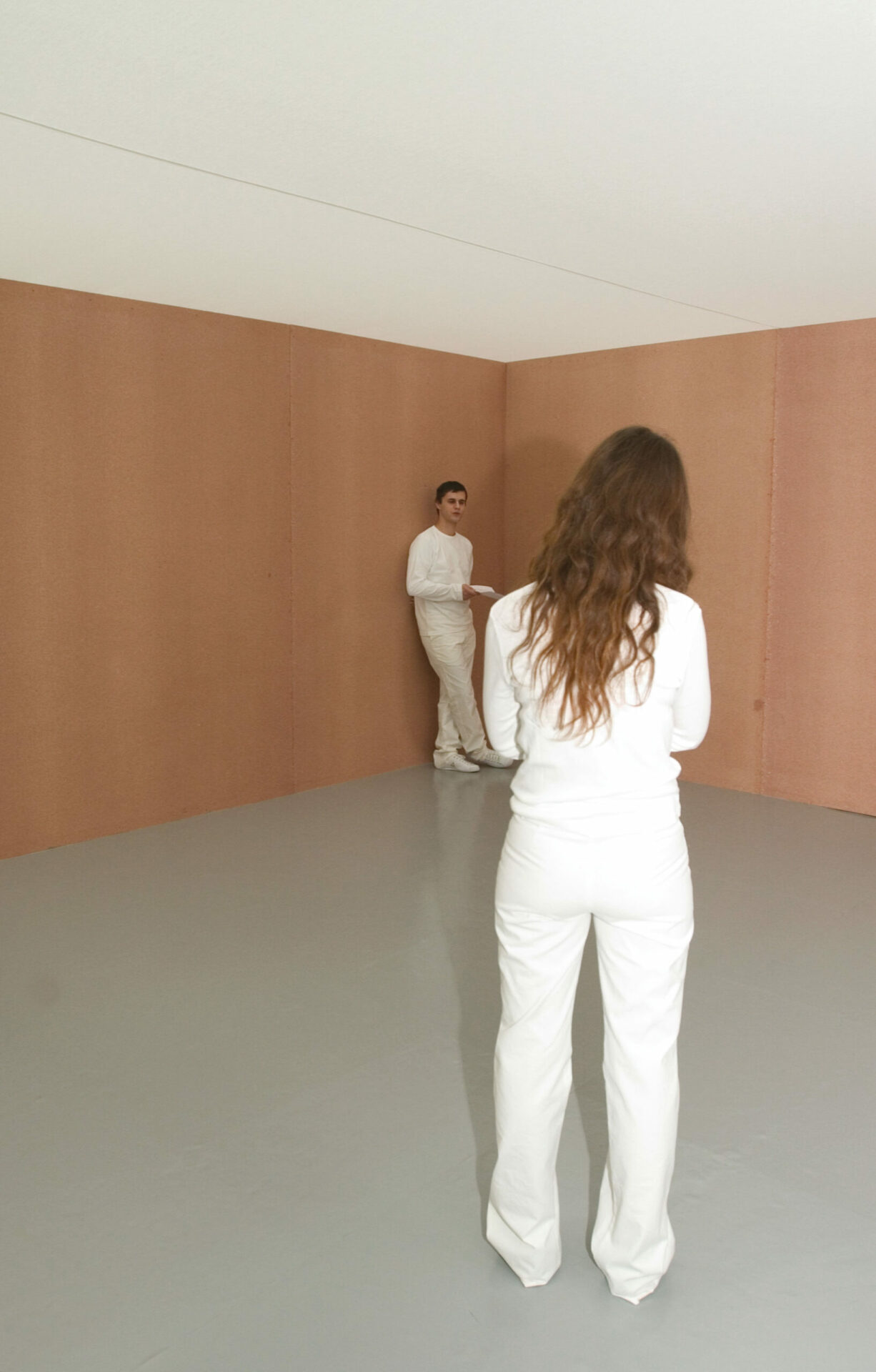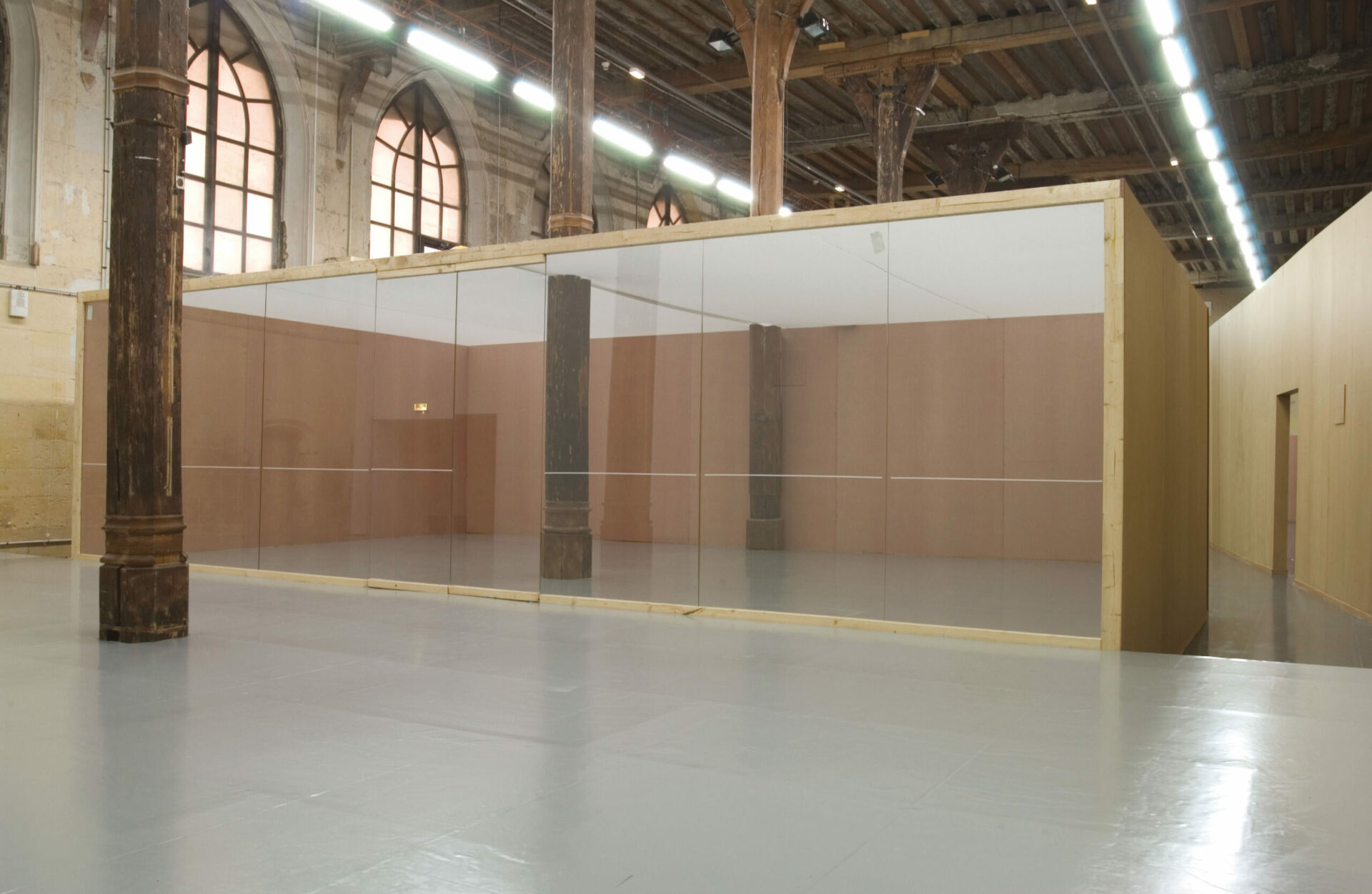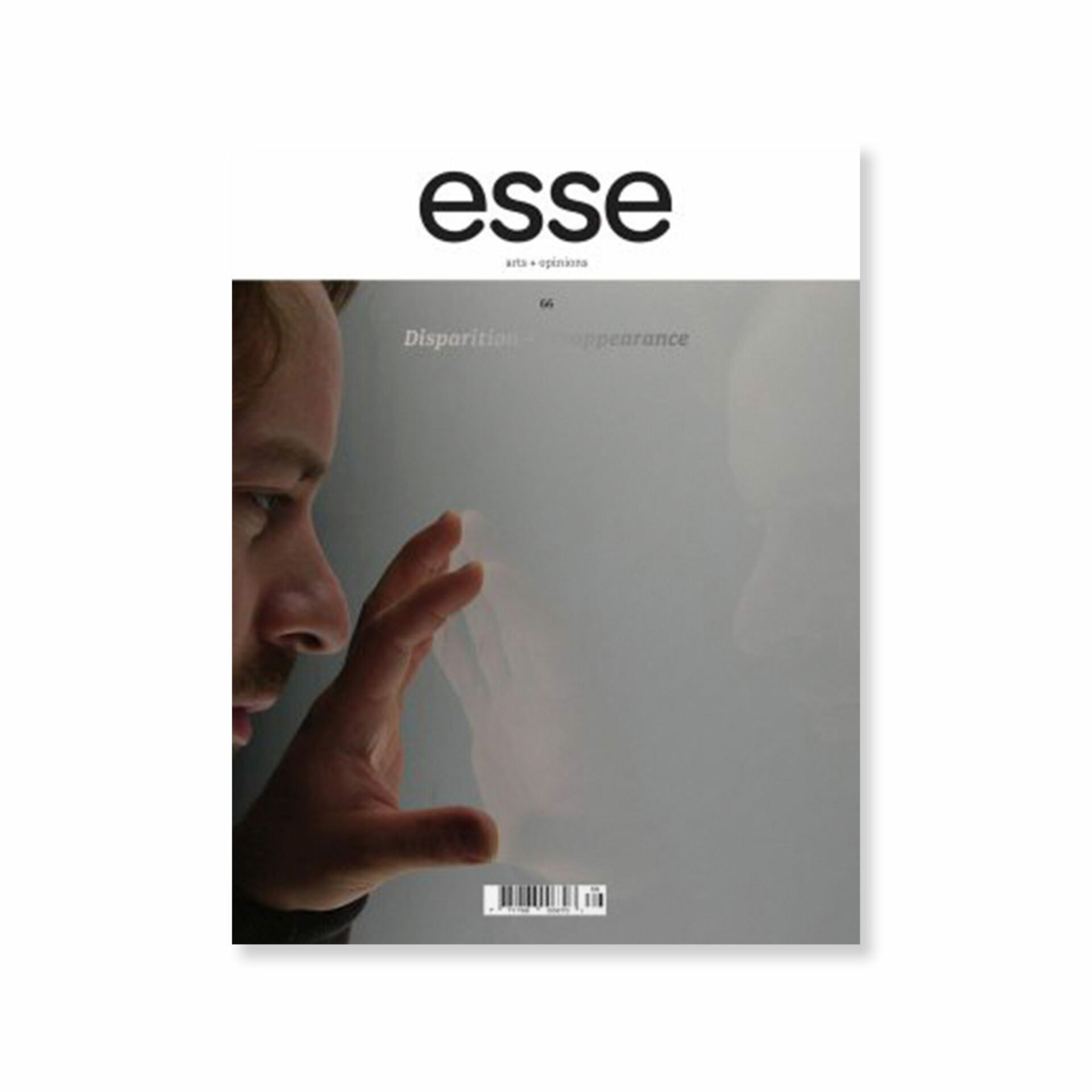
Photo : Rokfoto, courtesy of the artist & Chapter Gallery, Cardiff
During the “Dionysiac” exhibition, produced and presented at Centre Georges Pompidou in February 2005, Maurizio Cattelan stated: “This is doubtless a radical invisibility: to disappear, to break, so as not to bend.”1 1 - From the online press kit for the “Dionysiac” exhibition, Centre Georges Pompidou, communications department (our translation). In recent decades, many artists have taken up the challenge of making their production invisible, of producing no tangible object while remaining within the system. At the risk of seeming gratuitously absurd or provocative, artists find in invisibility more productive uses than a simple fascination with nothingness, emptiness, or the prospect of art or the artwork disappearing for good. By disappearance, then, we mean that something—a work, an exhibition—is withdrawn from the “spectators”’ view while continuing to exist nonetheless. Indeed, such disappearance, etymologically originating in the semantic field of visibility, is rather an occasion for a different perception of the work, tied to the imagination rather than to the perceptual or the visual.
Can’t See a Thing
From July 1 to November 16, 2008, long-distance runners sprinted through the Tate Britain (The Duveen Galleries) as if it were a stadium, in an accelerated rendition of visitors hurrying through museums without really seeing anything. Work No. 850 (2008), by Martin Creed, draws from the experience of a rushed visit to the catacombs of the Capuchin Monks in Palermo: “We were very late and only had five minutes to see it all before closing time. To do it, we had to run.”2 2 - Tate Britain, “Martin Creed: About This Work,” [online, at http://www.tate.org.uk/britain/exhibitions/duveenscommission/about.shtm].
In the end, Creed finds such a visit to be perfect: freed of the obligation of looking, he concludes that the works produce invisibility in any case. “I think it’s good to see museums at high speed. It leaves time for other things.”3 3 - Ibid. In their way, exhibition venues, visually obstructed with their profusion of objects, contribute to the general dissolution, possibly even to the disappearance of the image. Besides, an empty space can sometimes be more appealing than a space crowded with artworks. On arriving in France in 1911, three weeks after the theft of the Mona Lisa from the Louvre, Franz Kafka remarked that the public had rushed to see the empty space.
By way of a vacant exhibition space and an absent painting, the Mona Lisa had become an “invisible curiosity,” the object of a veritable cult.4 4 - Hans Belting, Le Chef-d’œuvre invisible (Nîmes: J. Chambon, 2003), 355-82. Responding to the risk of overexposure—and to visitors, who hardly look at what there is to see in any case—some artists, to avoid disappearance, simply propose apparently empty halls. Emptied of their objects, they acquire an invisible quality, allowing visitors “time for other things” than looking. For the Turner Prize in 2001, Creed exhibited a completely empty room at the Tate Britain: Work No. 227: The Lights Going On and Off. Which is precisely all that happens every five seconds. In this particular instance, visitors were often disconcerted, invariably disappointed by the deemphasis of the material aspects of the artwork, the uninterruptedly white walls, and the totally empty space.
The disappearance of the exhibited object, its invisibility, transforms the spectator’s perceptual activity. He or she is no longer a disembodied eye, as Brian O’Doherty had decried,5 5 - Brian O’Doherty, Inside the White Cube: The Ideology of the Gallery Space (Berkeley: University of California Press, 2000). but must in fact take part in actualizing the work, as long as the exhibition setup provides the required clues.


Tomorrow Is Another Fine Day,
Musée d’Art moderne de la Ville de Paris/ARC au Couvent des Cordeliers, 2005.
Photos: Marc Domage, courtesy Galerie Chantal Crousel
Creating Images from the Invisible
In some “objectless” exhibitions, spectators must engage an unconventional and unfamiliar experience: instead of passively looking on, they must become producers of images themselves. At Simon Pope’s Gallery Space Recall, for instance, when it was presented at the Chapter Arts Centre in Cardiff (October-November 2006), visitors were asked to recall an exhibition. Confronting visitors on the walls of the empty art centre was the following injunction: “You are invited to recall, from memory, a walk through a gallery space.” The exhibition was part of Walking Here and There, a research project carried out with neuropsychologist Vaughan Bell with the intent of exploring the relations between space, mobility, illusion, and memory. The dialectic between memory and the exhibition space is precisely what interests Rirkrit Tiravanija in his invisible A Retrospective (Tomorrow Is Another Fine Day), which he proposed at the Couvent des Cordeliers in Paris, February 10 to March 20, 2005. A guided tour enabled visitors to explore the space while imagining works that were described to them. Thus were presented Untitled 1989 ( ), Untitled 1990 (Pad Thai) (four white pedestals on which the artist placed objects and leavings from a Thai dinner), Untitled 1991 (Blind), Untitled 1992 (Free) (more scraps from shared meals), Untitled 1996 (Rehearsal Studio No. 6) (a music rehearsal room created for an exhibition at the Dijon Consortium), Untitled 1997 (Tomorrow Is Another Day) (a replica of his New York City apartment open night and day in the gallery), and Untitled 2002 (He Promised) (another of architect Rudolph Schindler’s Los Angeles home at the Secession in Vienna). Identification cards and loudspeakers could just be seen within a plain plywood scale-model of the Musée d’Art Moderne de la Ville de Paris; simultaneously, an actor playing a ghost recited Philippe Parreno’s “Sitcom Ghost” while Bruce Sterling’s Yesterday Will Be Another Day aired through the speakers. As the Musée d’Art Moderne’s programming took place at off-site venues while the museum was being renovated, the artist gave visitors wandering through the empty spaces an opportunity to recall exhibitions they might have seen in the past. The plywood structure had thus transformed the MAMVP into a locus of memory. A windowed white rectangle at the beginning of the exhibition invariably suggests the museum’s ground floor “aquarium.” This guided tour draws the exhibition into the classical device of ekphrasis, as every description of an absent work allows the visitor to create a mental image of that work. Connoisseurs of Tiravanija’s production leave the exhibition with a personal image they can later transform into a memory of having “seen” the retrospective at the Cordeliers. Visitors return home with this thought from Tiravanija: “We hope that you have heard and invented an image that is your very own.” Non-visibility or the absence of the work only produces images in a particularly structured space: the tangible object disappears, but the work continues to exist; the exhibition is then an ideal mechanism, because it allows one to employ a set of deictic markers—catalogues, informational cards, scenography—to give shape to what we do not see.
The absence of the work enables visitors to construct mental images, a process in line with the Classical rhetorical device of associating image with place. As in this exhibition, the art of memory consisted of delineating a mental architecture inhabited by the missing scenes or objects, which one had to imagine oneself navigating in order to complete the mnemonic process.6 6 - Francis Yates, The Art of Memory (Chicago: University of Chicago Press, 1966). Such constructions, called “palaces of memory,” had to be associated with uncommonly active or provocative images. An “invisible” exhibition might in fact produce more images than a conventional one.
Tiravanija’s text, “No Ghosts in the Wall,” creates a kind of scenario for the visit while illustrating his intention to connect his work with a certain reality—no ghost, nothing unreal or supernatural. The ghost—also the title given to the text that replaces the loaned work on the museum wall—produces no distinct image. Still in the dialectic of appearance and disappearance, the ghost is of the unreal, the supernatural, the fantastic, while the artist seems to be telling us that the images we create as we visit his retrospective are not fantastical, but quite real. Even the ghost one might bump into is of flesh and blood. The exhibition’s reduced visibility is not an apophatic or negative comment, but a locus for the production of images, even when there is nothing to see.

Work No. 850, Tate Britain, London, 2008.
Photo: Hugo Glendinning, courtesy of the artist & Hauser & Wirth (Zürich, London)
Situational Fiction
The connection with memory and the production of mental images is evident in Tino Sehgal’s practice as well. It is also manifest in the work’s particular invisibility. Unsuspecting spectators will often inspect the walls and look into nooks and crannies for several minutes without seeing anything before noticing that others in the hall are behaving strangely, turning their backs to them while mumbling, for instance, and then realize that this is part of the work.7 7 - Stephanie Cash, “Tino Sehgal at the ICA,” Art in America (September 2005). In This Progress, exhibited at the ICA in London in 2006, several tour guides—four generations, one after the other, from the youngest to the oldest—lead visitors through the ICA’s empty spaces and toward the question: “What is progress?” Here, too, characters are specific to the setting. Invisibility in Sehgal’s art is tied to a “deproduction.” Production and deproduction are reciprocally bound to each other in a binary logic,8 8 - Tim Griffin, “Tino Sehgal An Interview,” Artforum International (May 2005). in which it is a question of doing away with the tangible object, not the work of art. Museums must shed their prevailing emphasis on materialist production to propose different types of production: “Can I go into this place where the celebration of this model [of production] has installed itself in Western society, the museum, and celebrate something else?”9 9 - Ibid. The deproduction inherent to the materials used (movement, singing, speech) and to spectators’ uses of the work is, once again, productive of images. As with Tiravanija, speech and orality are employed as a means to construct fictional situations that the spectator must imagine and image. His work is neither performance nor spectacle, it is situational,10 10 - Ibid. a specific temporal, spatial, and imaginative situation that allows the artist to say that his work pertains to the museum.11 11 - Sebastian Frenzel, “‘Ceci n’est pas le vide’: An Encounter with the Artist of Transience Tino Sehgal,” signandsight (June 2005). The image thus created is dependent on the visitor’s ever-changing rapport with the work. The experience will leave no traces—neither video, nor object, nor photograph—other than mental images, memories. The artist refuses to document his exhibitions and considers that any video or photographic documentation would prove inadequate, for it would risk involving the production of objects.
If something has disappeared, it is indeed the visual and tactile object, but its absence tends to create a new type of attention. It is no longer enough to look passively on while awaiting an aesthetic frisson. Space must once more become the locus for creating fiction, not just for perception. Visitors too preoccupied with the fact of having nothing to see will remain attached to an overbearing reality that prevents them from experiencing the work. The walls will indeed remain white, empty, and insignificant. As the “invisible” exhibition must be imagined in order to exist, with verbal utterances acting as fictional props, it serves to stimulate each individual’s imaginative capacities. The more imposing the perceptual givens of the work, the less enabled are spectators to form their own images. Every exhibition, even the most conventional, only exists through the fiction the visitor creates.
[Translated from the French by Ron Ross]



